Zorba the Greek stands as one of cinema’s most profound celebrations of Cretan culture. Beyond its memorable scenes and vibrant storytelling, this landmark film captured nine distinct elements that reveal the true essence of Crete – from its age-old traditions and sacred customs to its untamed landscapes and indomitable spirit. Whether you’re a film enthusiast or cultural explorer, Zorba the Greek offers an authentic window into the heart of this Mediterranean gem, where timeless traditions blend with contemporary life in ways that continue to captivate audiences decades later.
1. The Dance That Sparked a Cultural Revolution
Three powerful steps forward, one soul-stirring slide back – this signature sequence from Zorba the Greek has become far more than just choreography. The film’s famous beach scene, where Anthony Quinn and Alan Bates dance with wild abandon, captures something profound about the Cretan spirit.
What many don’t know is that movie magic often springs from unexpected places. When Quinn injured his foot during filming, he created those distinctive sliding steps out of necessity. Yet this limitation sparked pure genius, as he merged traditional hasapiko and hasaposerviko movements into something entirely new.
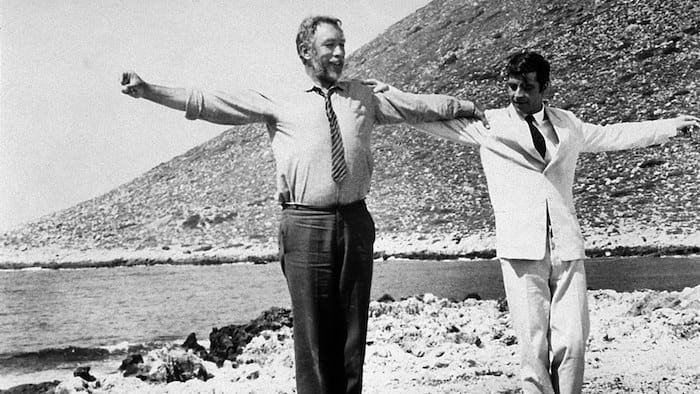
Today, this dance lives on at celebrations across Crete, where locals and visitors form lines, hands on shoulders, starting with slow, measured steps before building to an ecstatic crescendo. It’s become more than entertainment – it’s a physical dialogue that speaks of both life’s joys and sorrows through movement. In true Cretan style, the dance transforms even life’s hardships into moments of shared celebration.
What makes this sequence so powerful is how it bridges cultures – combining Western structure with Eastern expressiveness, just as Crete itself stands at the crossroads of different worlds. At any festival or celebration on the island today, you’ll find people of all backgrounds joining hands, proving that some languages need no translation.
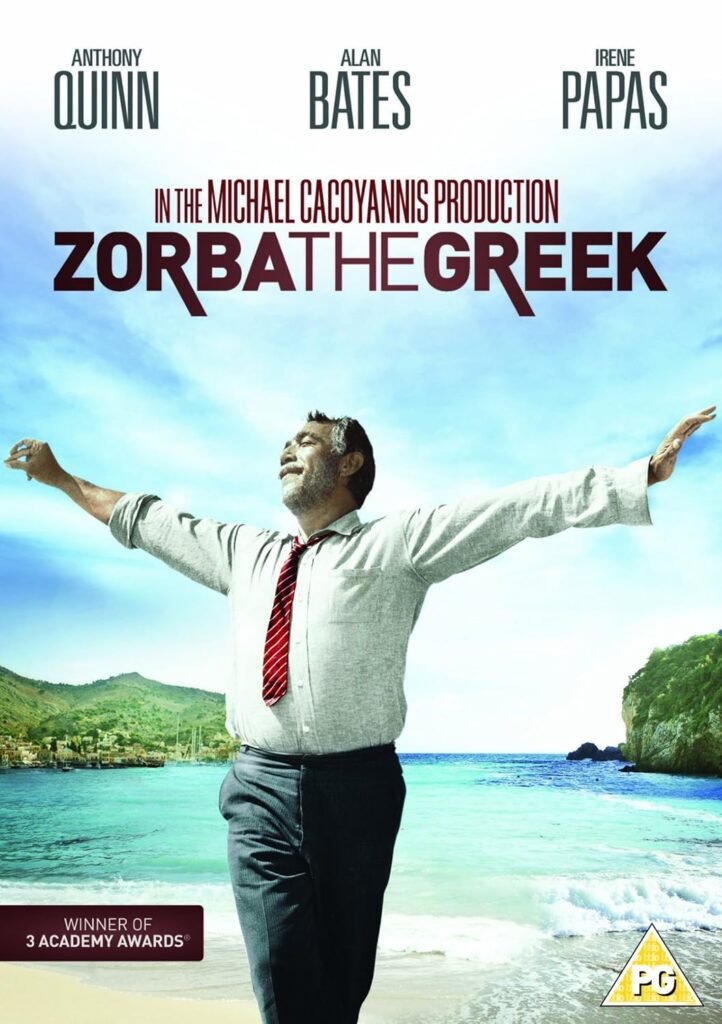
2. Mountain Village Life: A Window Into Tradition
Within the narrow stone pathways of Stavros village, Zorba the Greek captured the authentic heartbeat of Cretan mountain life. This wasn’t just a film set – it was a living, breathing community where every whitewashed wall and blue shutter told a story of generations past and present.
The village’s traditional kafenions remain the soul of mountain communities today. These aren’t just coffee shops – they’re social hubs where local men gather daily, their animated discussions floating out through open doors while the click-clack of backgammon (tavli) pieces provides a steady rhythm to their conversations.
The film beautifully captured the daily cadence of mountain life that still exists: the early morning sounds of bread deliveries echoing through narrow streets, the methodical sweeping of doorsteps at dawn, and the peaceful quiet of afternoon siesta when the whole village seems to pause and catch its breath.
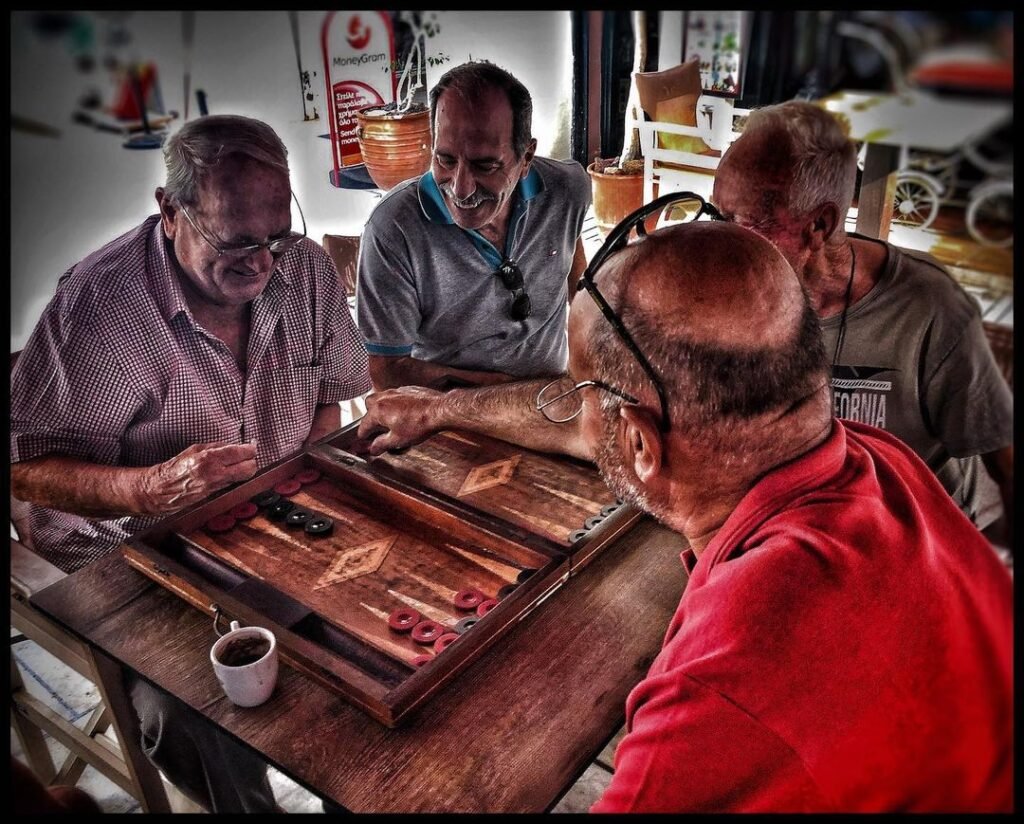
At the heart of every mountain village, you’ll find the central square crowned by an ancient plane tree, its branches spreading over stone tables where elders share stories and children play. The local church bells still mark time’s passage, their familiar tones threading through daily life just as they did in Zorba’s era.
What’s remarkable is how these villages have embraced the present while keeping their soul intact. Young Cretans are returning to restore family homes, bringing fresh energy while preserving age-old traditions. Here, in these mountain havens, the past doesn’t feel like history – it feels like home.
3. The Sacred Art of Cretan Hospitality
Nothing in Zorba the Greek resonates more deeply than the island’s legendary hospitality – a tradition that flows as freely as the raki (tsikoudia) served to every guest who crosses a Cretan threshold. This sacred custom of philoxenia (love of strangers) isn’t just about being polite – it’s woven into the very fabric of Cretan identity.
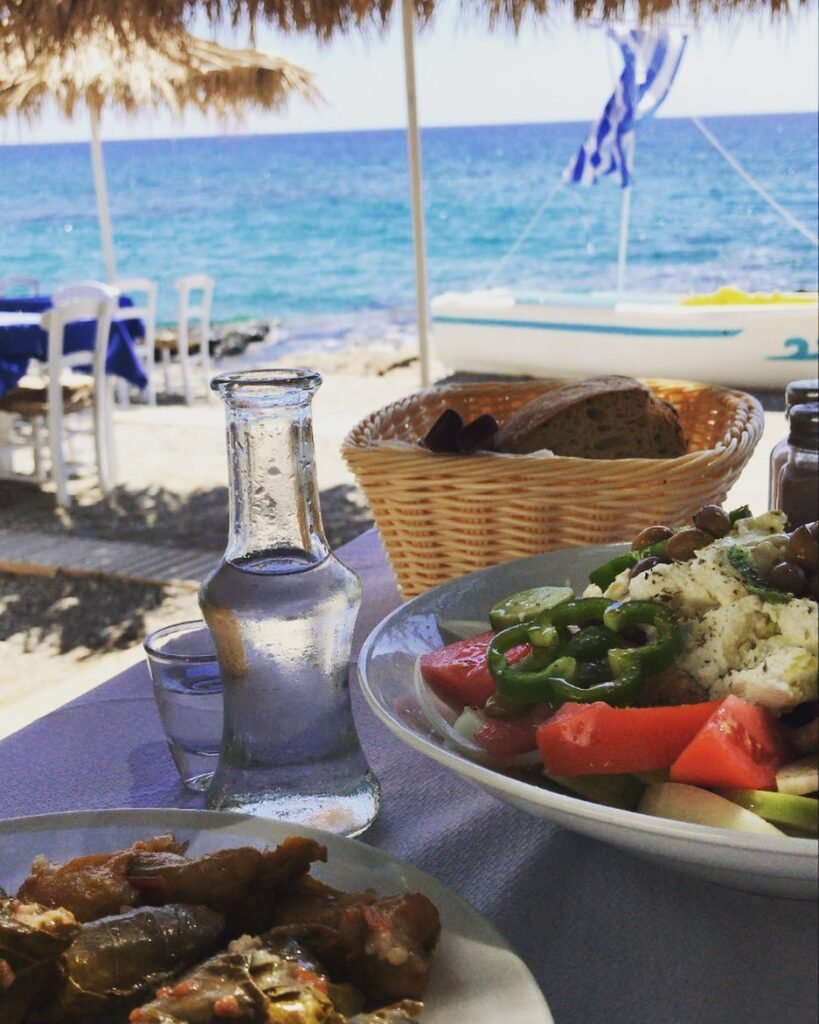
Step into any mountain village today, and you’ll experience these timeless welcoming rituals: the immediate appearance of raki accompanied by homemade meze, the serving of fresh water (an ancient symbol of welcome), and the heartfelt greeting of “Kalos Irthate” that makes strangers feel like long-lost family.
In Cretan homes and tavernas, hospitality follows unwritten rules that haven’t changed since Zorba’s time. Your glass will never stay empty, food appears without being ordered, and extra portions materialize as if by magic. Don’t be surprised when the owner’s grandmother emerges from the kitchen with a special treat she insists you try – refusing isn’t an option!
What makes this hospitality truly special is how it transforms casual visitors into honorary family members. This tradition of “adopting” outsiders runs deep in Cretan history – during World War II, local families would shelter and feed Allied soldiers, treating them as their own children and packing them food bundles for their journey, often at great personal risk.
Today, this same spirit continues as local families still “adopt” regular visitors, sharing their celebrations, family recipes, and traditions as naturally as they share their table. In an age of digital connections, you might find yourself added to a village WhatsApp group, receiving updates about local festivals and friendly check-ins long after you’ve returned home.
4. Nature’s Raw Beauty and Human Spirit
Zorba the Greek captured a profound truth about Crete – the eternal dance between its people and their untamed landscape. From the dramatic White Mountains piercing the sky to ancient olive groves clinging to terraced hillsides, this isn’t just scenery – it’s a living partnership that has shaped Cretan character for millennia.
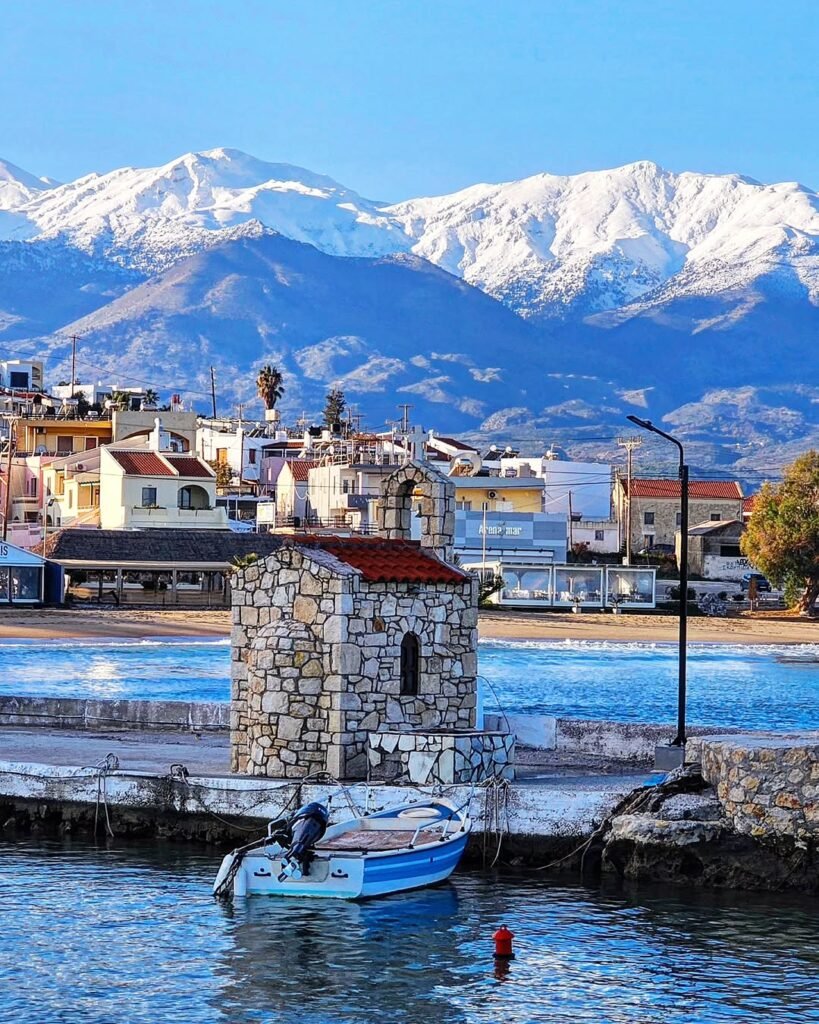
The film’s iconic lignite mine sequences perfectly symbolize this relationship – raw, challenging, sometimes brutal, yet deeply meaningful. It’s a testament to how Cretans don’t just live on their land; they engage in a constant dialogue with it, learning its rhythms and respecting its boundaries.
This connection lives on in modern Crete, where traditional wisdom meets contemporary innovation. You’ll find shepherds following ancient paths while checking weather apps on their phones, and beekeepers placing their hives among thyme-covered hills exactly where their grandparents did – but now they’re likely to be marketing their organic honey through Instagram.
What’s remarkable is how Cretans have maintained their environmental heritage while embracing sustainable progress. Traditional water conservation techniques now work alongside solar panels, and age-old crop rotation practices inform modern organic farming. Community initiatives protect endemic species while developing eco-tourism, proving that progress doesn’t have to come at nature’s expense.
5. A Feast for Body and Soul
In Zorba the Greek, every meal tells a story of connection. Modern Crete still embraces this tradition, where dining isn’t just about food – it’s about weaving the fabric of community one shared dish at a time. Under the shade of grape vines, long tables become stages for life’s daily theater.
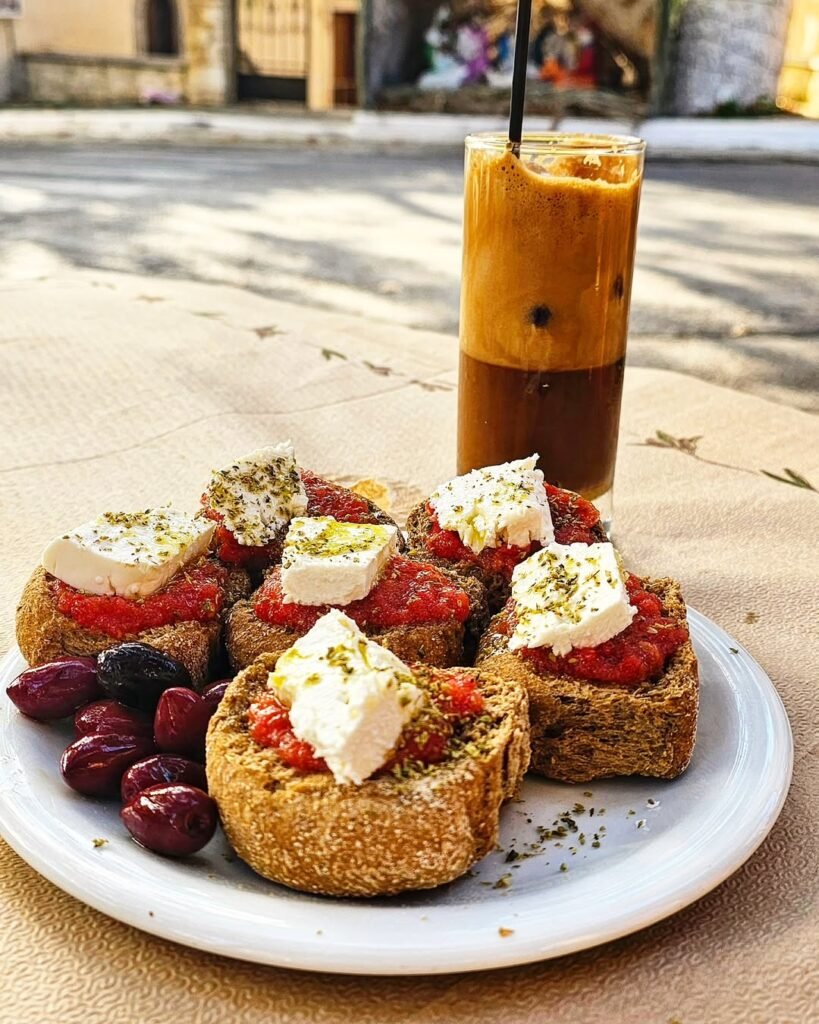
The art of siga siga (slowly slowly) transforms every meal into an event. Picture dakos topped with sun-ripened tomatoes, mountain greens drizzled with golden Cretan olive oil, and slow-cooked goat fragrant with wild herbs. But it’s not just what’s on the plate – it’s the way food appears continuously, as if orchestrated by an invisible conductor who knows exactly when to bring the next course.
The ritual of raki remains sacred, those small glasses marking both beginnings and celebrations. In village distilleries, families still make their own, sharing it proudly with visitors just as their grandparents did. Each glass comes with its own meze, transforming a simple drink into a miniature feast.
What makes Cretan dining truly special is its spontaneous nature. Neighbors drop by unannounced and are immediately welcomed to the table. Children weave between chairs while animated discussions flow as freely as the local wine. Even in the busiest tavernas today, you’ll find this same spirit – where every meal has the potential to turn into a celebration, and no one is ever truly a stranger at a Cretan table.
6. Music: The Island’s Heartbeat
Every note in Zorba the Greek resonates with Crete’s musical soul – a tradition that still pulses through the island today. While the film made the bouzouki famous worldwide, it’s the haunting sound of the lyra that truly captures the Cretan spirit, accompanied by the rhythmic backbone of the laouto and the soulful tones of the mandolin.
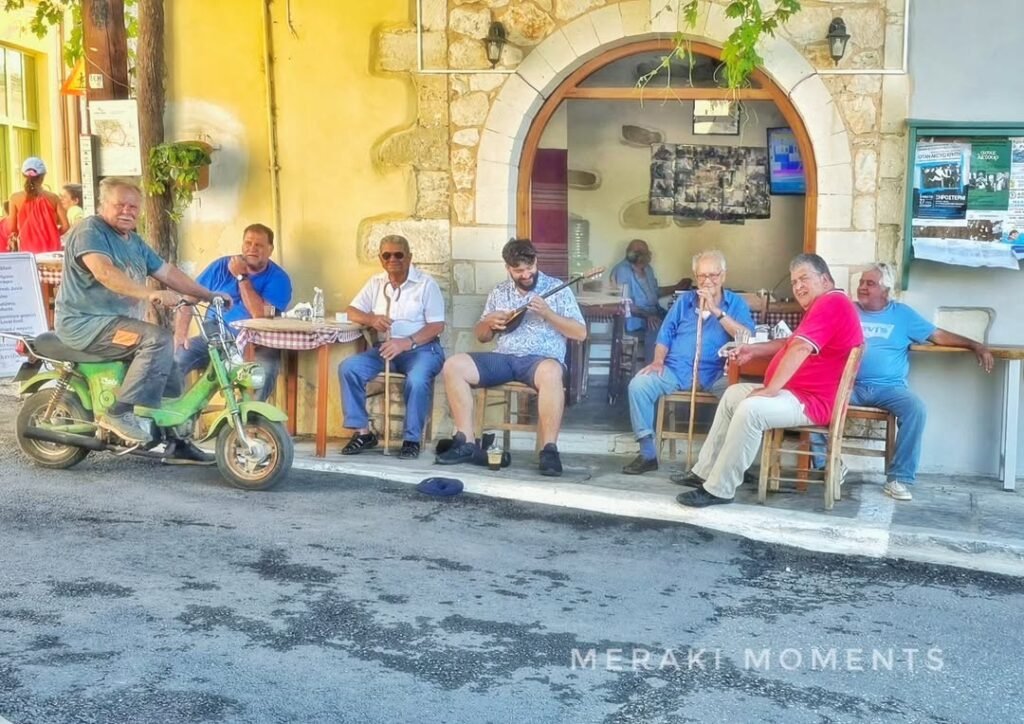
These aren’t just instruments – they’re storytellers. In village squares and kafenions, you’ll find musicians gathering spontaneously, their ancient melodies floating through evening air. There’s no formal start or finish – music simply happens, as natural as breathing. A shepherd might pull out his thiamboli (traditional flute) after dinner, or a grandfather might begin a song that soon has three generations joining in.
What’s remarkable is how young Cretans embrace these traditions alongside their modern playlists. Music schools across the island teach traditional styles, while social media shares village performances with the world. You’ll find teenagers practicing centuries-old wedding songs on their lyras while their friends film for Instagram – proof that some traditions never go out of style.
In tavernas and village festivals, music remains the thread that stitches community together. Instruments get passed around tables like treasured family heirlooms, and everyone – from the eldest grandmother to the youngest child – knows their role in keeping these melodies alive. It’s not about performance – it’s about participation in something timeless.
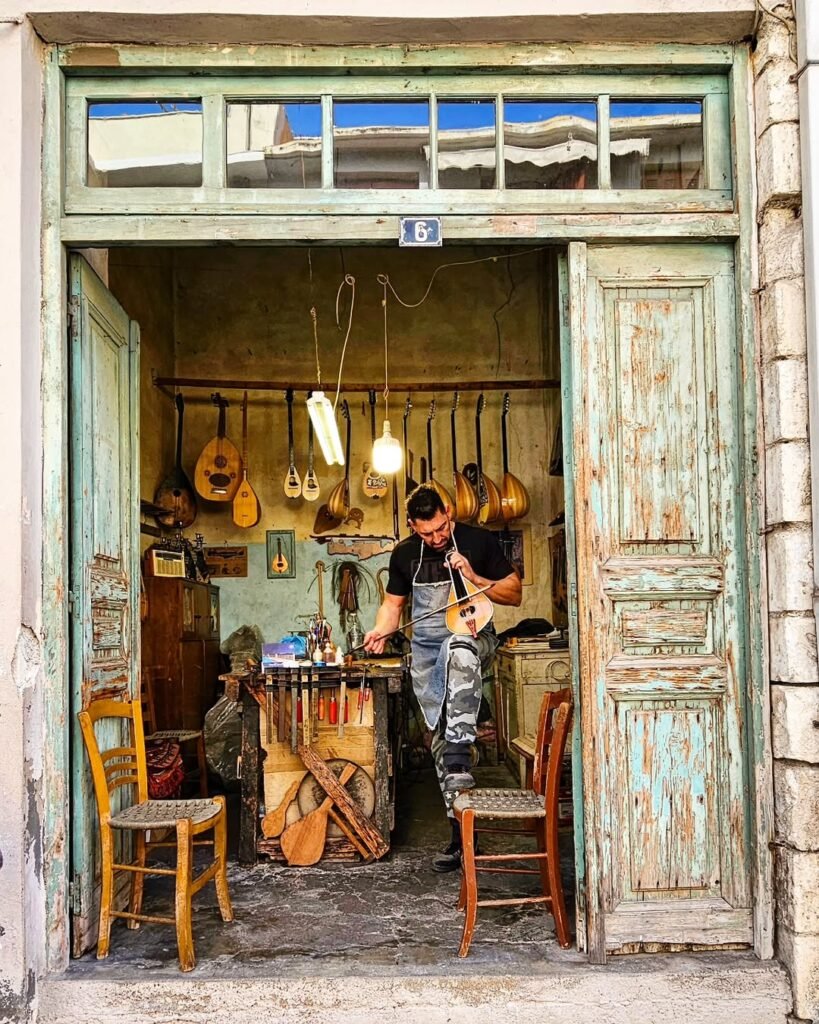
7. Where Ancient Meets Modern
Zorba the Greek beautifully captured how Crete dances between past and present – a balance that still defines island life today. Like the haunting moirologoi (fate songs) that echo through mountain villages, ancient traditions weave seamlessly through modern Cretan life in fascinating ways.
You’ll find this spiritual fusion everywhere: Orthodox churches standing beside ancient sacred trees, their branches adorned with both Christian icons and traditional evil eye talismans. Village wise women share their herbal remedies through WhatsApp, while farmers consult smartphone apps that track the same lunar planting calendar their ancestors followed centuries ago.
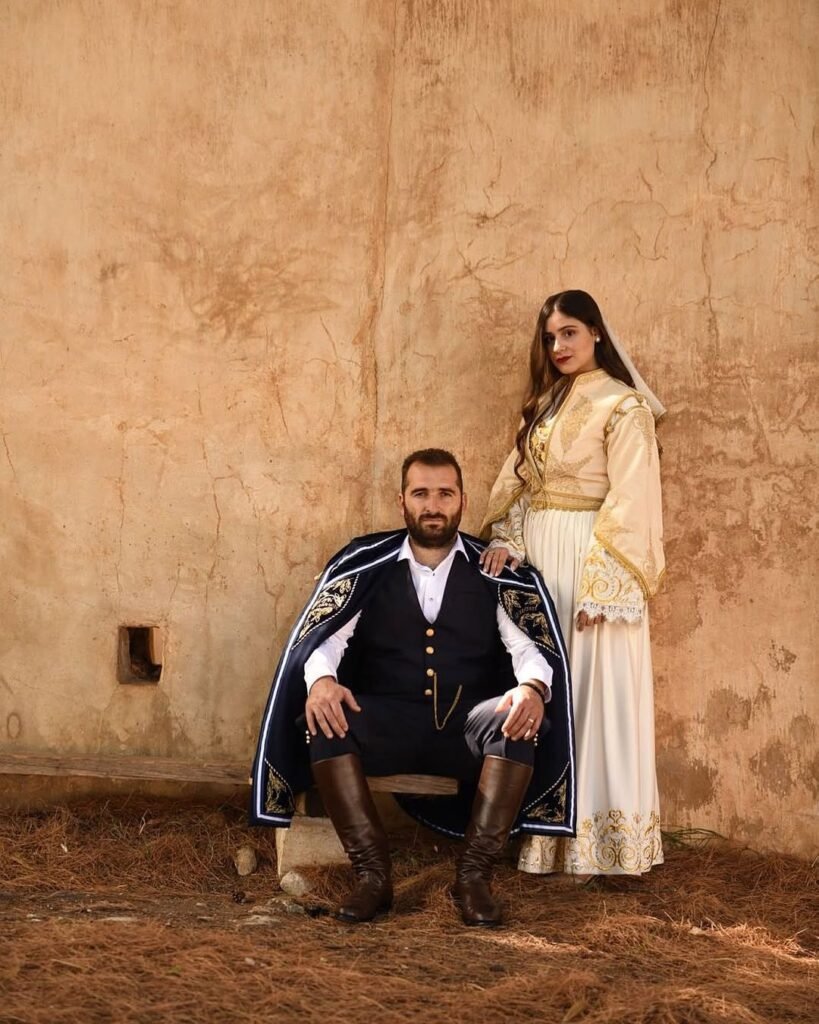
The island’s celebrations tell this story of adaptation. Traditional wedding rituals now accommodate Instagram-worthy moments, while age-old harvest festivals align with tourist seasons without losing their authentic spirit. Name days still matter more than birthdays, and full moon ceremonies continue to mark important moments – though now they might be documented on social media.
What makes this blend remarkable is how naturally it occurs. A priest might bless a new business using both ancient and modern rituals, while a family taverna follows traditional moon phases for its special dishes – advertised on their Facebook page. It’s not about preserving traditions in amber – it’s about keeping them alive and relevant in a changing world.
8. Pride and Honor: The Cretan Way
When Zorba the Greek showed its protagonist dancing defiantly on that windswept beach, it captured something essential about Cretan character – an unshakeable spirit that still pulses through the island today. From the smallest mountain village to the busiest harbor town, you’ll find that same proud determination governing daily life.
![That Mediterranean life! Anthony Quinn in "Zorba the Greek" [1964].](https://fortheloveofcrete.com/wp-content/uploads/2025/02/That-Mediterranean-life-Anthony-Quinn-in-Zorba-the-Greek-1964.-Photo-Credit-@gentleman_society-1024x851.jpg)
A Cretan’s word remains their bond, as solid as the island’s ancient stones. Handshake agreements still carry more weight than written contracts, and a family’s reputation continues to be its most precious asset. These aren’t outdated customs – they’re living principles that shape how business is done and communities are maintained.
What’s fascinating is how younger generations embrace these values while forging their own path. You’ll find entrepreneurs returning to their family lands, building businesses that honor traditional principles while embracing innovation. Village councils still make key decisions collectively, proving that ancient wisdom can guide modern progress.
This strength of character shines brightest in moments of challenge. When difficulties arise, communities still band together, sharing resources and supporting neighbors just as they did in Zorba’s time. It’s not about maintaining appearances – it’s about upholding the dignity and mutual respect that have always defined Cretan society.
9. Mediterranean Wisdom: Life in the Slow Lane
Through Zorba’s philosophical musings and joyful acceptance of life’s rhythms, Zorba the Greek captured the timeless Mediterranean wisdom that still guides Cretan daily life. Here, the art of “siga siga” (slowly slowly) isn’t just a saying – it’s a blueprint for living well that feels more relevant than ever.
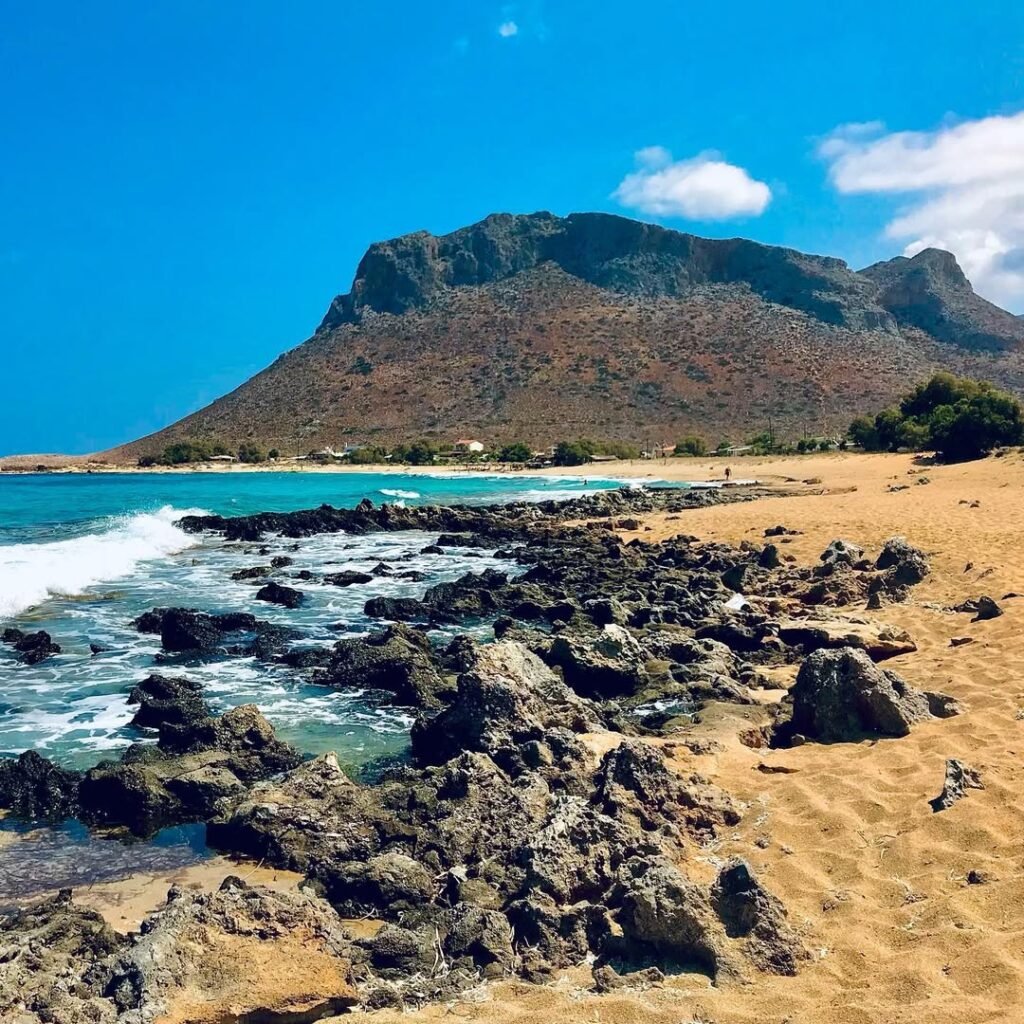
You’ll see this wisdom in action everywhere: problems aren’t rushed but solved over unhurried cups of coffee, meals stretch into hours of conversation, and work naturally pauses when human connection calls. Even death is approached with a remarkable grace – celebrated as part of life’s natural cycle, with ancestors honored daily in ways both big and small.
Modern Cretans have found a beautiful balance between progress and this inherited wisdom. They might use smartphones, but they’ll still stop to enjoy a sunset. They understand efficiency, but won’t sacrifice their afternoon siesta. It’s about choosing which parts of modern life serve the soul and which ones don’t.
What makes this philosophy special is its focus on finding joy in ordinary moments. You won’t find Cretans chasing the next big thing – they’re too busy enjoying simple pleasures like home-grown tomatoes, spontaneous gatherings with neighbors, or the perfect coffee shared with friends. In a world that’s always rushing forward, they’ve mastered the art of being present.
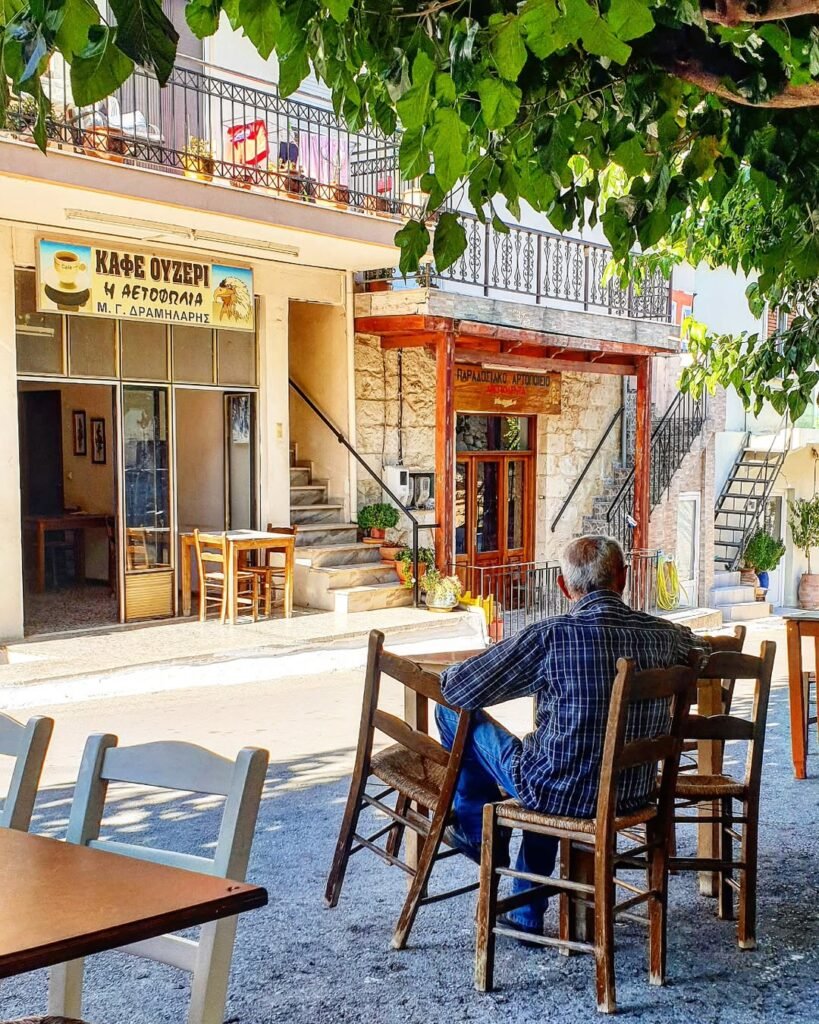
The legacy of Zorba the Greek lives on in these daily choices, reminding us that true wealth isn’t measured in possessions but in moments of connection, in meals shared with loved ones, and in the courage to dance with whatever life brings our way.
The Living Spirit of Zorba
Zorba the Greek sparked something far beyond cinema – it created a cultural bridge that still connects visitors to Crete’s authentic heart. Today, when you visit Stavros Beach near Chania (now affectionately known as “Zorba’s Beach”), you’re not just walking in Anthony Quinn’s footsteps – you’re experiencing a living tradition. The film’s influence echoes in modern tavernas where traditional hospitality flourishes, in the kafenions where locals still gather for coffee and conversation, and in the spontaneous musical gatherings that bring communities together. What began as a portrait of Cretan life has become a timeless testament to the island’s enduring spirit.
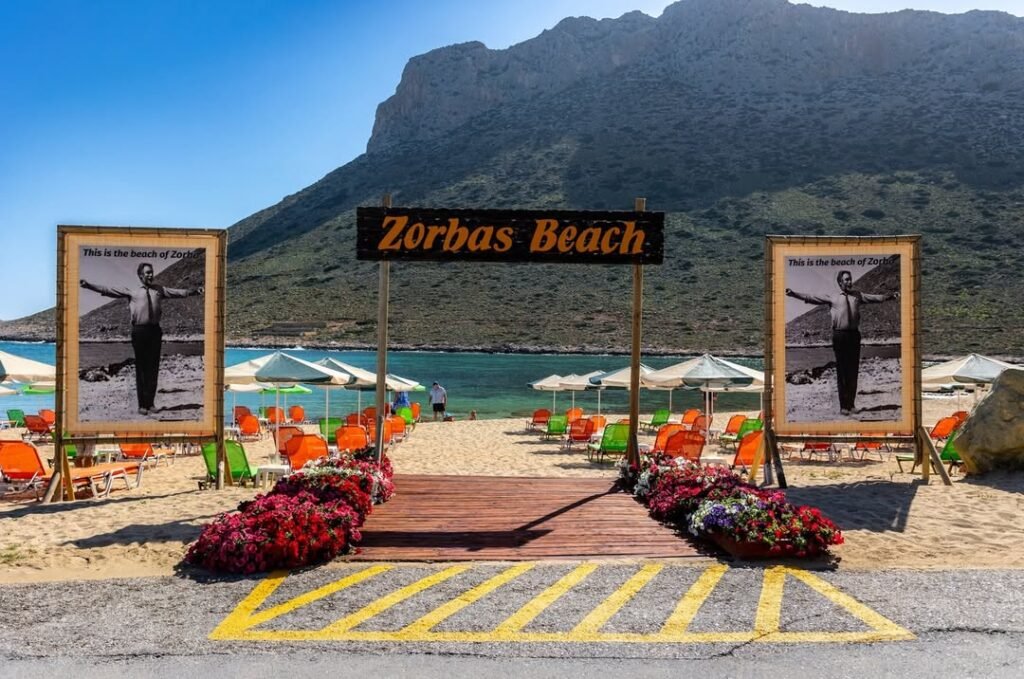
Conclusion
The enduring impact of Zorba the Greek reaches far beyond the silver screen. Through its authentic portrayal of Cretan life, the film sparked a global fascination with this remarkable island, inspiring thousands to learn Greek, explore its rich history, and immerse themselves in its vibrant musical traditions. More than just a cinematic masterpiece, it became a window into a way of life that many found themselves longing for – where time moves more slowly, where strangers become family, and where life’s hardships are transformed into reasons to dance.
Today, Crete continues to attract those seeking something deeper than a typical Mediterranean holiday. They come looking for the spirit of Zorba – that ineffable blend of wisdom, warmth, and wild joy that the film captured so perfectly. And they find it: in mountain villages where traditions thrive, in family tavernas where meals become celebrations, and in the timeless rhythms of an island that has never forgotten how to live life fully. Zorba the Greek didn’t just tell a story; it revealed a way of living that continues to resonate in our fast-paced world, reminding us that sometimes the richest moments come when we slow down, connect with others, and dare to dance in the face of life’s challenges.
This post contains affiliate links, which means I may earn a commission if you click and make a purchase at no additional cost to you.
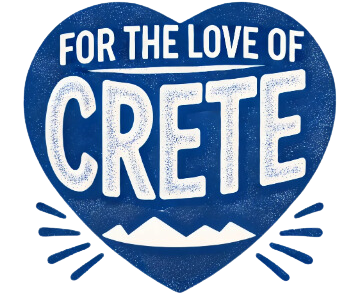
Fantastic article.
I visited in Crete about 32 time, every time for 8 days.
I love the island, the people, the food, the music, in fact Everything about the island.
What a wonderful testament to Cretan philoxenia – that magical hospitality that keeps drawing people back! 😊 Thank you for sharing!
-Bella 🇬🇷